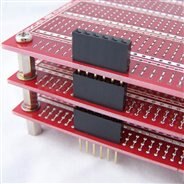Hello guys,
I am trying to measure how much current does my pcb consumes, it is a USB powered device which logs data from a temperature sensor, and I wanna make it a portable device by adding a battery to it and take it anywhere I want while logging data from the temperature changes.
The thing is I need to know how much current does the device consumes in order to decide what capacity to choose for the battery, I do not want to just buy a 3000 mah battery and hope for the device to last long, I want to know how much would it take to discharge a certain capacity battery in order to make a final decision. I also would like to add an OLED display and some buttons/switches/LED's
My pcb does not have test points, and I lost the pcb/schematic files nor did I made any simulation or measurements for power/voltage information.
The only thing that I have is the schematic but only as a screenshot image.
Hope that I could get help or ideas from you guys.

